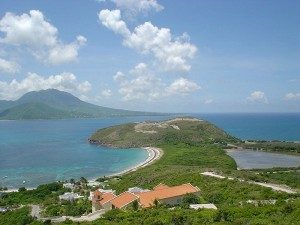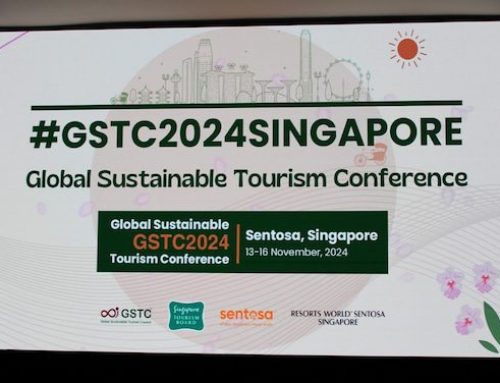
Recognizing that the small island nation is at a critical turning point to ensure that its growth balances development interests with safeguards for the local environment, culture, and community livelihoods, St. Kitts has begun pursuing innovative destination stewardship programs under the leadership of Minister of Tourism and International Transport Ricky Skerritt—himself a keen environmentalist and Rhodes scholar. “I pledge continued support from the Tourism Ministry as part of our national quest for achieving global sustainable standards in tourism product preparation and delivery,” Minister Skerritt has said of efforts such as St. Kitts and Nevis’ participation in the GSTC Early Adopter Program.
In this post, we look at just few of these efforts St. Kitts and Nevis has launched in the last two years since its July 2012 GSTC assessment.
Community Action Planning
In 2012, following the GSTC assessment benchmarking St. Kitts and Nevis’ policies and practices against the GSTC Criteria for Destinations, the Ministry of Tourism set in motion a process to start implementing the GSTC recommendations. The first step was an inaugural Sustainable Tourism Forum, held in November 2012 by the Ministry of Tourism and facilitated by Sustainable Travel International, which conducted the destination assessment on behalf of the GSTC. The forum brought together approximately 50 St. Kitts and Nevis stakeholders from across sectors such as tourism, agriculture, culture, investment, sustainable development, and environment, to collectively prioritize the GSTC’s recommendations and plan action projects to advance those priorities. In addition to identifying steps to begin implementation, the forum discussion aimed to raise awareness among the broad group of participating stakeholders about the importance of sustainable development of tourism, St. Kitts and Nevis’ top economic sector.
Sustainable Destination Management Council, and Stakeholder Training
One of the GSTC focus areas identified by St. Kitts and Nevis stakeholders as high priority was improvement of capacity building and coordination among key destination decision-makers—especially public sector—regarding sustainable tourism development. Stakeholders envisioned an interagency sustainable tourism governance body with wide representation across offices of government, and including private sector membership. The interagency council would receive training in sustainable destination management, and meet regularly to collaborate on advancing sustainable development priorities.
Originally envisioned at the Sustainable Tourism Forum in November 2012, the St. Kitts Inter-Agency Sustainable Destination Management Council (“IASDMC”—pronounced “I as DMC”) officially launched one year later in November 2013. The IASDMC is chaired by Diannille Taylor-Williams, Assistant Permanent Secretary of the St. Kitts and Nevis Ministry of Tourism and International Transport. In addition to Tourism, the IASDMC includes representation from organizations such as the Bureau of Standards, the Ministry of International Transport, the Investment Promotion Agency, Ministry of Sustainable Development, and Departments of Water Services, Culture, Marine Resources, Constituency Empowerment, and Environmental Health. Private sector representatives include electricity provider SKELEC, the Hotel and Tourism Association, and Kittitian Hill, a sustainability mission-oriented new luxury resort development on St. Kitts.
Last year, members of the IASDMC, along with an additional group of St. Kitts stakeholders, received USAID-developed online sustainable tourism training, as well as in-person capacity building in sustainable destination management. An additional training is scheduled for another group of destination stakeholders this year, as well as continuing education for members of the IASDMC, provided by Sustainable Travel International.
In addition to the cross-sector collaboration of the full council, the IASDMC has established three working groups to implement projects in three priority areas:
(1) Tourism Workforce Development—enlisting both demand and supply sides to attack the challenges of developing a Kittitian workforce with the necessary skills to succeed in today’s tourism sector;
(2) Public Awareness—focused on raising the public profile of sustainability throughout St. Kitts and Nevis; and
(3) Visitor Philanthropy—designing programs for travelers and residents alike to give back to the community, with an initial project creating opportunities to contribute to coconut tree replanting on island.
The IASDMC is a cutting-edge mechanism to build capacity among a broad-based, cross-sector body of key destination decision-makers, and engage their commitment and influence to achieve sustainable development goals. Sustainable destination management is still a relatively new field. Forward-thinking destinations—beginning with the Early Adopters—that recognize the value of implementing the concerted policies and practices in the GSTC Criteria are truly innovators. It will be important to monitor the results from structural approaches like the IASDMC, and apply the lessons learned.
“Tourism can have a positive impact on the surrounding community and environment, but that doesn’t happen by accident,” says Minister Skerritt. “Sustainable development of tourism that benefits hardworking people living in local communities, and nurtures authentic culture and environmental protection—that is the kind of development it has been my Ministry’s priority to pursue on St. Kitts. That kind of responsible development is what delivers the best possible island experience to our visitors, while ensuring that our own residents continue to enjoy living and doing business here in this country that we love so dearly.”
The St. Kitts Ministry of Tourism has been named one of two finalists for the Caribbean Tourism Organization’s (“CTO”) 2014 Sustainable Tourism Award in Destination Stewardship. CTO will announce this year’s Sustainable Tourism Award winners at the State of the Industry Conference in the U.S. Virgin Islands later this month.
****
Note: GSTC Early Adopter St. Kitts did win the 2014 CTO Sustainable Tourism Award in Destination Stewardship. The award was presented to St. Kitts Ministry of Tourism Permanent Secretary Patricia Martin and Assistant Permanent Secretary Diannille Taylor-Williams at CTO’s State of the Industry Conference in September. The award goes to a country that demonstrates improved sustainable tourism planning, widespread adoption of good sustainable tourism management practices, multi-stakeholder engagement, the preservation of cultural heritage, and protection of the environment, among other accomplishments.
Photo credit: St. Kitts Tourism Authority.
****
About the GSTC
The Global Sustainable Tourism Council is a global initiative dedicated to promoting sustainable tourism efforts around the world. Housed within the United Nations World Tourism Organization (UNWTO), the GSTC works to expand understanding of and access to sustainable tourism practices; helps identify and generate markets for sustainable tourism; and educates about and advocates for a set of universal principles, as defined by the Global Sustainable Tourism Criteria. The Criteria, a set of voluntary principles that provide a framework for the sustainability of tourism businesses and destinations across the globe, is the cornerstone of our initiative. For more information, visit www.gstcouncil.org.
About the GSTC Destination Criteria
A panel of business owners, academics, government officials, and other experts, who examined the UN World Tourism Organization’s Indicators of Sustainable Development and other such guidelines currently in existence, developed the GSTC’s Destination Criteria. Because the Criteria are intended to describe a globally applicable set of minimum steps needed to approach sustainability, the criteria are seen as a baseline that each destination should add to or adjust as needed.
The GSTC does not aim to certify destinations as sustainable; rather, the Council reviews existing certification standards and acknowledges those that meet its Criteria. However, any destination may use the new Criteria as a guide to improve environmental, cultural, and social practices.




